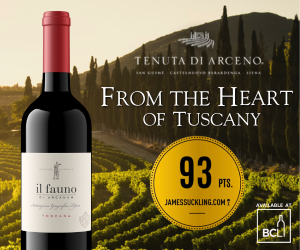Of all the trends in wine over the last few years my least favourite is the creeping level of sweetness in dry table wines.

Wine drinkers have always talked dry and sipped sweet but, with viticulture so technically advanced and grapes picked riper and riper, it seems as if every other wine made in the New World finishes with perceptible sweetness.
While I can understand the attraction of sugar, I don't get why people want it in their wine. The world is already awash in sweet, manufactured drinks, not to mention sweet sauce reductions on just about every restaurant menu. Do we really need to add wine to the list?
Apparently so, given the over-night moscato success in 2011. With a little help from the rappers, mostly cheap imitations of the stylish, authentic, Italian version of muscat are on a roll. The New World faux stuff is mostly just sweet. The fact that it lacks the delicate mix of low alcohol, fizz and acidity to be the real Italian deal doesn't seem to matter. It's sweet.
Then again faux moscato is the perfect wine for these dumbed down times in wine. Sweet, soft and cheap, it is selling like the proverbial hotcake - which, come to think of it, would probably be a great food match.
Although rap singers and moscato fans might sing a different tune, I'm convinced that place and origin will matter more to wine drinkers in 2012, and that authenticity will gain even further followers this year and, as odd as it sounds, it need not be tied to quality. In other words. knowing a wine's provenance, be it Osoyoos or Paso Robles or Piedmont, is far more important, at least to me, than any quality assurance from regional or national wine legislators.
Cool climate wines, as poorly as they are defined, will continue to capture the imagination of writers and sommeliers because they tend to be fresher, lighter in alcohol, better balanced and generally more vibrant than your aver-age sunburned wine brand yet wines with a story remain a double edge sword. Intellectually interesting wines are never an easy sell (ask a retailer) and even harder to produce (ask any winemaker).
Perhaps the best good news wine trend in 2011 is the continuing movement to lighter glass bottles. I just don't get the obsession some wineries have with extremely heavy bottles. What are they hiding behind all that weight? Paper bottles (lined with plastic bags) are already in the works for every-day wine as they provide adequate storage at one tenth the energy. Part of wine's sophistication is that it can appeal to the buyer on multi-levels and giving the finger to the environment via your heavy bottle will come back to haunt you sooner than you think.
This week, we begin 2012 with six wines that continue to meet our weekly agenda to be interesting, have a definable origin that is commensurate with its price, and over deliver whenever possible for the price.
We know Pinot Gris in B.C. so I'm not exaggerating when I say Bodega Lurton Pinot Gris 2011 is one of the best white wine buys on the planet. This winery has been grossly under-represented in Canada for too many years but don't let that stop you from tracking down this delicious and affordable wine. The 2011 is a little lower in alcohol, which only high-lights its aromatic nose and pristine flavours of ripe yellow fruits all with a dash of lees for complexity. Balanced fresh and persistent, it really over delivers for its price.
Similar to last year's edition, Trapiche Astica Merlot Malbec 2010 comes with peppery, tobacco, floral, cherry, cedar aromas and a fresh, juicy, round palate for a mere $9. The attack is more herbal with tobacco, cherry jam, pepper, earth and spice flavours. Pretty appealing for immediate drinking with your pasta or barbecue offerings.
If you really want to get off the sugar this year, drink more dry Portuguese red wine in 2012. The Porca de Murça 2009 is a good starting point. Expect light tannins, juicy acidity and cherry jam, plum, herbal, smoky, peppery, meaty, flavours with some fruit and intensity. Solid value.
Finca Flichman has seen some ups and downs of late, but the Finca Flichman Syrah Roble 2010 appears back on track. Look for a meaty, menthol, blackberry, roasted bell pepper Syrah nose and flavours with a soft, round, easy palate. A straight up, simple-style red made for the weekday barbecues.
Chile is the theme country at the coming Playhouse wine festival, reason enough to brush up your Chilean palate. Palo Alto Reserva 2009 is a Cabernet Sauvignon, Carmenère, Syrah blend with attractive cassis, black cherry, savoury, meaty aromas. The attack is fresh and light with more meaty, herbal, smoky, savoury fruit that finishes with a twist of dried herbs. Grilled lamb chops or flank steak would be a good match.
Our final pick is the best of Catena Zapata secondary Alamos lineup. A blend of Mendoza fruit picked at high-altitude vin-yards, Alamos Malbec 2010 spends about nine months in 50/50 French and American oak. Expect a soft, round, warm, spicy fruit entry with earthy, black fruit flavours mixed with black licorice undertones in the finish. A fleshy, simple malbec that would be a good match with slow-cooked beef.
DRY DRINKS
Bodega Lurton Pinot Gris 2011, Valle de Uco, Tunuyán, Mendoza, Argentina
Price: $13
UPC: 00635335320211
Score: 88/100
Remarks: One of the best white wine buys on the planet.
Trapiche Astica Merlot Malbec 2010, Mendoza, Argentina
Price: $9
UPC: 7790240026344
Score: 85/100
Remarks: Drink now with pasta or barbecue offerings.
Porca de Murça 2009, Douro Valley, Portugal
Price: $11
UPC: 005601109211127
Score: 86/100
Remarks: Good fruit and intensity on the pal-ate. Solid value.
Finca Flichman Syrah Roble 2010, Mendoza, Argentina
Price: $12
UPC: 7790470050454
Score: 85/100
Remarks: A simple, easy style for any barbecue at a fair price.
Palo Alto Reserva Cabernet Sauvignon - Carmenère - Syrah 2009, Valle del Maule, Chile
Price: $15
UPC: 007804320214085
Score: 86/100
Remarks: Dry, fresh, light palate with meaty, herbal, smoky, savoury fruit.
Alamos Malbec 2010, Mendoza, Argentina
Price: $14
UPC: 00779450008084
Score: 87/100
Remarks: A soft, fleshy, simple malbec best served with meat.
Read more: http://www.vancouversun.com/life/High+time+table+wines/5961786/story.html#ixzz1lZs8KlWn14

 quicksearch
quicksearch





